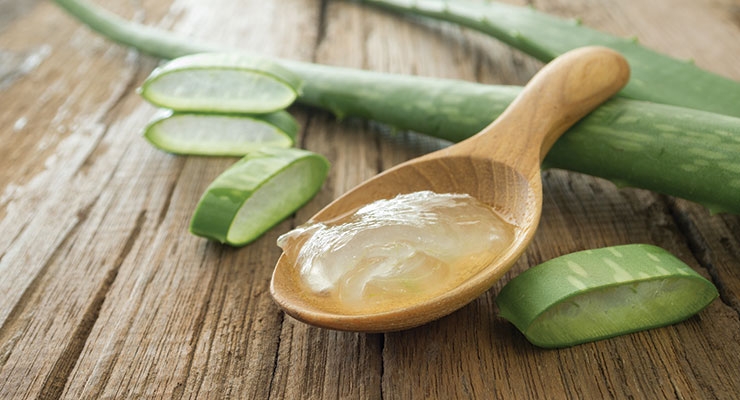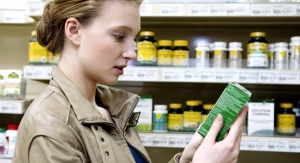Richard A. Lovett, JD, PhD, Contributing Writer11.01.16
At a meeting in Rockville, MD, on Aug. 2, an expert panel convened by AOAC International approved “First Action” official methods for two more chemicals of interest to the supplement industry: aloin and theanine.
For several years, AOAC has been working through a list of “priority” dietary supplement ingredients selected by a stakeholder panel made up of representatives of industry, government and academia, with funding from NIH’s Office of Dietary Supplements (“Ingredient Authentication in the Lab,” January/February 2016).
Earlier this year, an AOAC expert review panel approved a method for measuring the chondroitin content of chondroitin-containing products and ingredients (“Standards Development in Analytical Testing,” July/August 2016). Now, aloin and theanine have joined the list of priority ingredients with newly approved official methods, each evaluated and approved to meet standards set through AOAC’s stakeholder process.
Aloe Vera’s Aloin
Aloin is an anthrone compound contained in aloe vera leaves.
“The reason it’s important is that there are several different products that come from the aloe vera plant,” said Steven Dentali, PhD, a botanical industry consultant and former Herbalife research fellow who, working with Herbalife, spearheaded the effort to get a method approved.
In ancient times, one of these products was the plant’s dried sap, which was used as a laxative—something particularly prized at the time, Dr. Dentali said, because “people generally didn’t have access to fresh fruits and vegetables year-round.”
Researchers now understand that aloe’s laxative ingredient is aloin, which is contained in the green rind of the plant’s thick leaves.
Today, however, the $1.6 billion aloe vera industry is primarily focused more on soothing beverages made from the leaves’ interior juice. For these, aloin is an unwanted contaminant. After all, who wants a laxative they don’t need? Also, a 2013 study by the National Toxicology Program found that long-term exposure to whole-leaf aloe vera extracts (ones that contain both the interior juice and sap from the aloin-containing rind) can cause cancer in rats.
Not that anyone deliberately uses whole-leaf aloe vera for aloe juice beverages. “This is something that virtually nobody ingests,” Dr. Dentali said.
Instead, the industry has two basic methods for avoiding aloin contamination in beverages. One is by mechanically stripping off the leaves’ outer rind so that only juice from the inner leaf is included in the beverage. “What’s left is this fillet—almost like a fish fillet—of inner-leaf material that is then crushed and processed into juice,” Dr. Dentali explained.
The other process begins by grinding up the entire leaf. “This gives you a green goop,” he noted—a mixture that is then “decolorized” via purification processes such as filtrating with activated charcoal. The material used by NTP was described as non-decolorized. “We think that’s an important qualifier because virtually all material in the marketplace is decolorized,” he added. “It’s important to call out that this is not the same product.”
Still, that doesn’t mean it’s unimportant to be able to prove that aloin isn’t present in products that claim to be aloin-free.
The newly approved method isn’t particularly exotic. “It’s just HPLC (High Performance Liquid Chromatography),” said Dr. Dentali, adding that it was developed and submitted to AOAC by colleagues within Herbalife, Los Angeles, CA. “It’s not a difficult method to run.” What matters is that it’s been officially approved by AOAC, whose official methods are often viewed as the gold standard for analysts all over the world.
Jane Wilson, executive director of the International Aloe Science Council, Silver Spring, MD, agreed. “It is good for us to have a recognized assay to demonstrate the safety of these products,” she said, adding that it is also helpful that AOAC’s stakeholders include people from regulatory agencies. That gives the regulators direct input, she said, producing “greater regulatory acceptance” of the outcome.
Additionally, the “International” part of AOAC International’s name is also significant. “Our organization has membership around the world,” Ms. Wilson said, “so having something being a recognized international method is a benefit.”
Finally, the method is approved for both finished products and raw materials, she added, which ensures that testing will be consistent throughout the production chain.
From a technical perspective, the method has a detection limit of 10 ppb, and a limit of quantitation of 20 ppb—vastly lower than anything that might be of concern for safety, according to Gary Swanson, senior vice president for global quality at Herbalife.
“We’re not talking about a highly toxic material,” Dr. Dentali said. “We’re talking about something that’s safe as a laxative, but you won’t want to consume on a daily basis.”
What’s truly important, according to Darryl Sullivan, director of industry and regulatory affairs at Covance Laboratories, is that the newly approved method represents the first time the industry has had an official method of analysis to measure the quality of aloe vera products.
“It gives us the ability to do better quality control, [and] to demonstrate the quality of aloe in products that are very common in the marketplace today,” he said. Better yet, he added, its approval as an AOAC Official Method makes it now globally recognized as the “gold standard” test method for this analyte.
Theanine in Tea Leaves
Theanine is a different chemical altogether. Present in dry tea leaves at levels up to 4%, it’s an amino acid thought to reduce stress and anxiety, improve concentration and help generate a state of relaxed wakefulness that can stimulate creativity. So theanine is a beneficial compound, rather than a contaminant to be eliminated.
In tea, it’s not only responsible for part of the flavor, but may combine with the alertness effects of tea’s caffeine to offer both focus and calm, according to Maria Ofitserova, PhD, a senior research chemist with Pickering Laboratories, Mountain View, CA.
Theanine is also available in a wide variety of dietary supplements. “They come in different forms: tablets, capsules, gel caps, powders—a lot of things,” Dr. Ofitserova said. “Some primarily contain tea, while others include additional botanical ingredients plus vitamins, etc. They go from being simple dry extracts of tea to very complex mixtures.”
Having an approved method for detection of theanine in such products, she continued, not only makes it easier for supplement manufacturers to declare with confidence the amount contained in their products—something that Dr. Ofitserova’s tests reveal to vary by a factor of more than 100—but also helps scientists seeking to determine the benefits of this compound to know how much theanine is in any given product they choose to test.
“If you would like to claim the benefit of theanine in your [product] it would be good to actually know how much is in [it],” and without the help of AOAC’s stakeholder process, it would never have happened, Dr. Ofitserova said. “That’s for sure.”
What Comes Next?
Both the aloin and theanine methods are “First Action” methods. That makes them fully official, but still subject to tweaking, as labs across the world report their experience with them. Once that has been done, the methods will be promoted to “Final Action” status. And even before that, they will be included in AOAC’s Official Methods of Analysis book, which “is in practically every chemical analysis laboratory in the world,” Dr. Dentali said.
For several years, AOAC has been working through a list of “priority” dietary supplement ingredients selected by a stakeholder panel made up of representatives of industry, government and academia, with funding from NIH’s Office of Dietary Supplements (“Ingredient Authentication in the Lab,” January/February 2016).
Earlier this year, an AOAC expert review panel approved a method for measuring the chondroitin content of chondroitin-containing products and ingredients (“Standards Development in Analytical Testing,” July/August 2016). Now, aloin and theanine have joined the list of priority ingredients with newly approved official methods, each evaluated and approved to meet standards set through AOAC’s stakeholder process.
Aloe Vera’s Aloin
Aloin is an anthrone compound contained in aloe vera leaves.
“The reason it’s important is that there are several different products that come from the aloe vera plant,” said Steven Dentali, PhD, a botanical industry consultant and former Herbalife research fellow who, working with Herbalife, spearheaded the effort to get a method approved.
In ancient times, one of these products was the plant’s dried sap, which was used as a laxative—something particularly prized at the time, Dr. Dentali said, because “people generally didn’t have access to fresh fruits and vegetables year-round.”
Researchers now understand that aloe’s laxative ingredient is aloin, which is contained in the green rind of the plant’s thick leaves.
Today, however, the $1.6 billion aloe vera industry is primarily focused more on soothing beverages made from the leaves’ interior juice. For these, aloin is an unwanted contaminant. After all, who wants a laxative they don’t need? Also, a 2013 study by the National Toxicology Program found that long-term exposure to whole-leaf aloe vera extracts (ones that contain both the interior juice and sap from the aloin-containing rind) can cause cancer in rats.
Not that anyone deliberately uses whole-leaf aloe vera for aloe juice beverages. “This is something that virtually nobody ingests,” Dr. Dentali said.
Instead, the industry has two basic methods for avoiding aloin contamination in beverages. One is by mechanically stripping off the leaves’ outer rind so that only juice from the inner leaf is included in the beverage. “What’s left is this fillet—almost like a fish fillet—of inner-leaf material that is then crushed and processed into juice,” Dr. Dentali explained.
The other process begins by grinding up the entire leaf. “This gives you a green goop,” he noted—a mixture that is then “decolorized” via purification processes such as filtrating with activated charcoal. The material used by NTP was described as non-decolorized. “We think that’s an important qualifier because virtually all material in the marketplace is decolorized,” he added. “It’s important to call out that this is not the same product.”
Still, that doesn’t mean it’s unimportant to be able to prove that aloin isn’t present in products that claim to be aloin-free.
The newly approved method isn’t particularly exotic. “It’s just HPLC (High Performance Liquid Chromatography),” said Dr. Dentali, adding that it was developed and submitted to AOAC by colleagues within Herbalife, Los Angeles, CA. “It’s not a difficult method to run.” What matters is that it’s been officially approved by AOAC, whose official methods are often viewed as the gold standard for analysts all over the world.
Jane Wilson, executive director of the International Aloe Science Council, Silver Spring, MD, agreed. “It is good for us to have a recognized assay to demonstrate the safety of these products,” she said, adding that it is also helpful that AOAC’s stakeholders include people from regulatory agencies. That gives the regulators direct input, she said, producing “greater regulatory acceptance” of the outcome.
Additionally, the “International” part of AOAC International’s name is also significant. “Our organization has membership around the world,” Ms. Wilson said, “so having something being a recognized international method is a benefit.”
Finally, the method is approved for both finished products and raw materials, she added, which ensures that testing will be consistent throughout the production chain.
From a technical perspective, the method has a detection limit of 10 ppb, and a limit of quantitation of 20 ppb—vastly lower than anything that might be of concern for safety, according to Gary Swanson, senior vice president for global quality at Herbalife.
“We’re not talking about a highly toxic material,” Dr. Dentali said. “We’re talking about something that’s safe as a laxative, but you won’t want to consume on a daily basis.”
What’s truly important, according to Darryl Sullivan, director of industry and regulatory affairs at Covance Laboratories, is that the newly approved method represents the first time the industry has had an official method of analysis to measure the quality of aloe vera products.
“It gives us the ability to do better quality control, [and] to demonstrate the quality of aloe in products that are very common in the marketplace today,” he said. Better yet, he added, its approval as an AOAC Official Method makes it now globally recognized as the “gold standard” test method for this analyte.
Theanine in Tea Leaves
Theanine is a different chemical altogether. Present in dry tea leaves at levels up to 4%, it’s an amino acid thought to reduce stress and anxiety, improve concentration and help generate a state of relaxed wakefulness that can stimulate creativity. So theanine is a beneficial compound, rather than a contaminant to be eliminated.
In tea, it’s not only responsible for part of the flavor, but may combine with the alertness effects of tea’s caffeine to offer both focus and calm, according to Maria Ofitserova, PhD, a senior research chemist with Pickering Laboratories, Mountain View, CA.
Theanine is also available in a wide variety of dietary supplements. “They come in different forms: tablets, capsules, gel caps, powders—a lot of things,” Dr. Ofitserova said. “Some primarily contain tea, while others include additional botanical ingredients plus vitamins, etc. They go from being simple dry extracts of tea to very complex mixtures.”
Having an approved method for detection of theanine in such products, she continued, not only makes it easier for supplement manufacturers to declare with confidence the amount contained in their products—something that Dr. Ofitserova’s tests reveal to vary by a factor of more than 100—but also helps scientists seeking to determine the benefits of this compound to know how much theanine is in any given product they choose to test.
“If you would like to claim the benefit of theanine in your [product] it would be good to actually know how much is in [it],” and without the help of AOAC’s stakeholder process, it would never have happened, Dr. Ofitserova said. “That’s for sure.”
What Comes Next?
Both the aloin and theanine methods are “First Action” methods. That makes them fully official, but still subject to tweaking, as labs across the world report their experience with them. Once that has been done, the methods will be promoted to “Final Action” status. And even before that, they will be included in AOAC’s Official Methods of Analysis book, which “is in practically every chemical analysis laboratory in the world,” Dr. Dentali said.


























